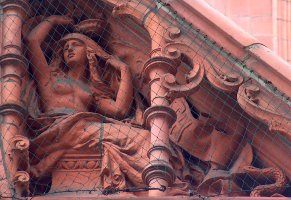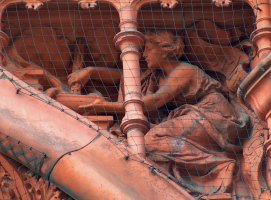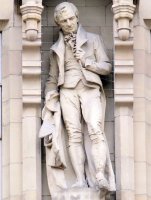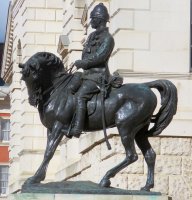Harry Bates ARA (1850-1899)
Figures on the Birmingham Law Courts facade.
The Victorian sculptor Harry Bates modelled a number of public statues and some ideal works in his short life and career. His beautiful female figures are in the New Sculpture style.
The sculptor Harry Bates was born in Stevenage, Hertfordshire. He became an architect's clerk, and from 1869 worked as a stone carver and architectural decorator. He became a student at the Lambeth School of Art, and briefly studied modelling under Jules Dalou during the latter's stay in London, before entering the RA Schools in 1881. There, he won a travelling scholarship, and chose to go to France where he renewed his acquaintance with Dalou and also met Rodin, who influenced his style of working.
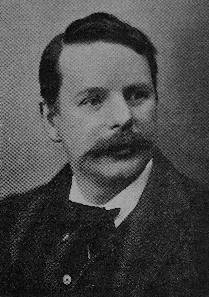
He produced a series of relief panels on classical themes in the late 1880s: The Odyssey, Aneas, Homer and Psyche. He achieved great success with his Hounds in Leash in 1892, on the strength of which he was elected ARA in that year. Contemporary literature refers to the his capacity ‘to convey a sense of lifelike and energetic action… the restless impatience of the hounds, frantically tearing at the restraining leash… the vigorous modelling of the limbs and muscles of the athlete who, with every sinew on the strain, and his feet digging into the ground, is putting forth all his strength to curb his powerful charges’. Also in the year 1892 he produced his most beautiful statue, Pandora, bought for the nation under the terms of the Chantrey Bequest. It was for a long time on display at the Tate Gallery (now Tate Britain), but is rarely on show these days. Bates's oeuvre does not seem to be large, partly because of his late start and short life. He also devoted considerable time to one large equestrian statue of Lord Roberts for Calcutta, finished in 1896 and later moved to a place called Deolali, and was working on a companion statue of Lord Landsdowne through until his death - the completed version is in Barrackpore, Calcutta. Versions of the Lord Roberts statue were subsequently put up in Glasgow and London (Horseguards Parade).
John Owens statue.
Hounds in Leash is at Manchester, and a plaster version exists in the Tate Gallery collection. Terra cotta figures of Queen Victoria and attendants are on the exterior of the Birmingham Law Courts. The Institute of Chartered Accountants in Great Swan Alley off Moorgate, in the City of London, has stone corbels by Bates, as well as friezes and other sculpture by Thornycroft and Stevenson.
Lord Roberts statue, Horseguards.
Putting aside Hounds in Leash, Bates’s work is most known for the ‘serenity and repose’ that characterises his female and male fugures. His figures show an ideal beauty, which he claimed to take from the life without improving on his models. His male figures tend to the heavily muscular. But his girls tend to the soft and supple rather than the athletic, rounded and broad in the hip, more slender in the proportions of the upper body, long haired or short haired in the arts and crafts fashion. The naturalism of pose places him in the New Sculpture movement, and much of his work would today seem to fit comfortably under the banner of Symbolism.
A few further pictures of Harry Bates's work are on this page.
